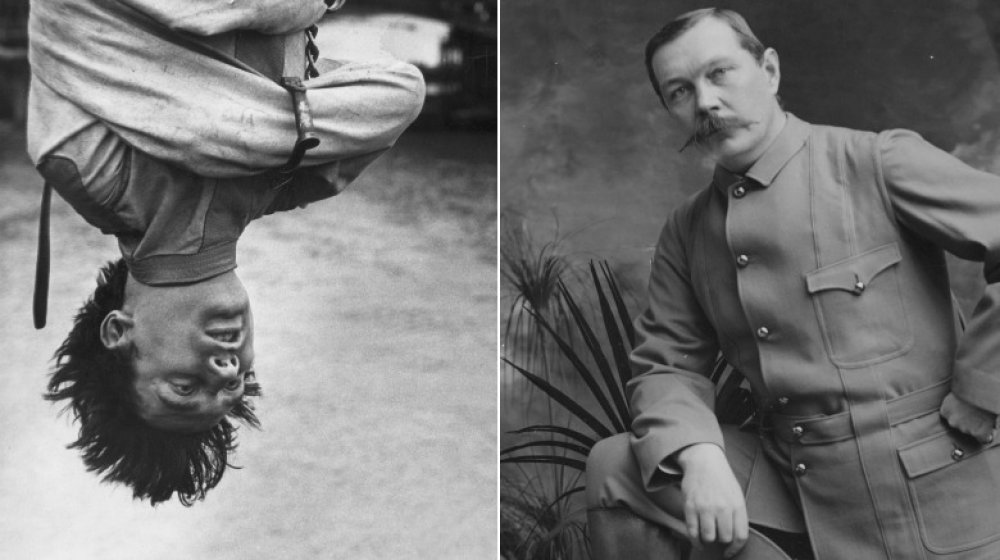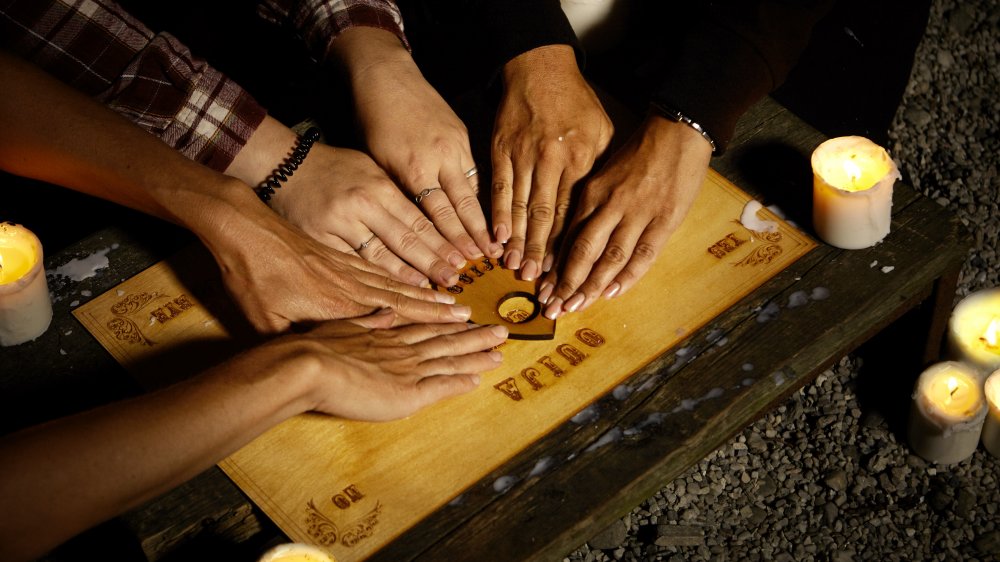The Truth About Harry Houdini And Arthur Conan Doyle's Relationship
Viewed through a contemporary lens, the friendship between Harry Houdini and Arthur Conan Doyle falls somewhere between The Odd Couple and The League of Extraordinary Gentlemen. At the beginning of the 20th century, the world's greatest escape artist and the brain behind Sherlock Holmes were, by all accounts, totes BFFs. But over the years, their relationship soured, inevitably, for the same reason that so many kinships wither and die: there just weren't enough ghosts.
The story starts out with a young Houdini who, in the early days of his career, would hold public seances to make ends meet, utilizing many of the same techniques used by "psychics" today and giving him an intimate understanding of the business of lying to people for money. Still, he was human, and wanted to believe in the possibility of communicating with the afterlife, especially following the death of his mother in 1913.
Doyle, meanwhile, who made a pretty swell living writing about the importance of logic and reason, was just bonkers for spiritualism. He dropped staggering amounts of cash on attempts to talk to the dead after his son died during World War I, and his wife became sort of a big deal in the growing community of high-society supernatural enthusiasts, especially advocating for "automatic writing," the practice of channeling outside forces and allowing them to put pen to paper through the use of a living person.
How to make a friendship disappear
Houdini was skeptical of the idea, but accepted an invitation to a seance held by Mrs. Doyle in Atlantic City in 1922. As reported by The Guardian, the medium apparently produced fifteen pages of messages from Houdini's mother from beyond the veil, but missed a crucial detail: the writing was all in perfect English, a language that Harry's mother had never come close to mastering. When Houdini publicly called the Doyles out on this, their friendship crossed the proverbial streams and never stopped exploding.
Arthur Conan Doyle, heeding the yet unspoken advice of Steve Perry, didn't stop believing, and held onto that feeling for the rest of his life, being taken in by a handful of now-famous hoaxes including the Cottingley Fairy photographs. Houdini tried in vain to convince his friend that he was being duped by con artists, at one point going so far as to create a remarkably complex illusion demonstration of "psychic abilities" just for Doyle, all so he could finish it off by saying "this was all fake, please stop trusting huxters." Doyle walked away from the experience convinced that Houdini was secretly psychic, finally proving the Holmes axiom that "Once you have removed the impossible, whatever remains, however improbable, probably has X-Men powers." Their friendship never recovered.

